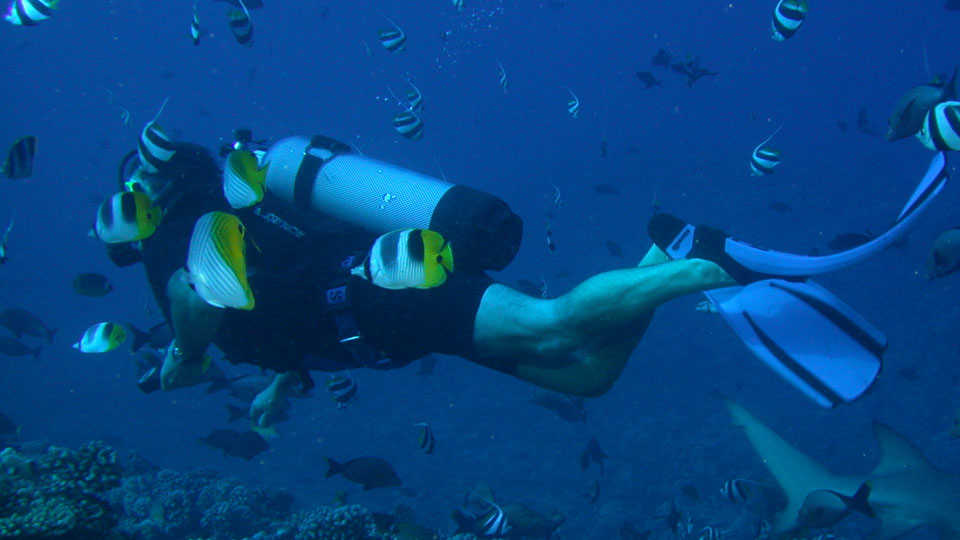

- Different shapes. The objects are submerged in fresh water and hang attached by a lightweight string. Which of the three objects experiences the greatest buoyant force? A) The object made of apatite B) The object made of amalgam C) The object made of titanium D) All the same.
- Buoyant force is greatest on a submerged a) is the same on each b) 1-cubic centimeter block of lead. C) 1-cubic centimeter block of alumin.

The buoyant force on a submerged object is equal to the weight of the fluid displaced. This principle is useful for determining the volume and therefore the density of an irregularly shaped object by measuring its mass in air and its effective mass when submerged in water (density = 1 gram per cubic centimeter). This effective mass under water will be its actual mass minus the mass of the fluid displaced. The difference between the real and effective mass therefore gives the mass of water displaced and allows the calculation of the volume of the irregularly shaped object (like the king's crown in the Archimedes story). The mass divided by the volume thus determined gives a measure of the average density of the object. Archimedes found that the density of the king's supposedly gold crown was actually much less than the density of gold -- implying that it was either hollow or filled with a less dense substance.
Examination of the nature of buoyancy shows that the buoyant force on a volume of water and a submerged object of the same volume is the same. Since it exactly supports the volume of water, it follows that the buoyant force on any submerged object is equal to the weight of the water displaced. This is the essence of Archimedes principle.
How To Find The Buoyant Force Of An Object Submerged In Water
The force of buoyancy that acts on an object is directly proportional to the volume of the object that is submerged. In other words, the more of a solid object that is submerged, the greater the force of buoyancy that acts on it. This means that even objects that sink in liquid have a buoyancy force pushing upwards on them. The reason there's a buoyant force is because of the rather unavoidable fact that the bottom (i.e. More submerged part) of an object is always deeper in a fluid than the top of the object. This means the upward force from water has to be greater than the downward force from water.